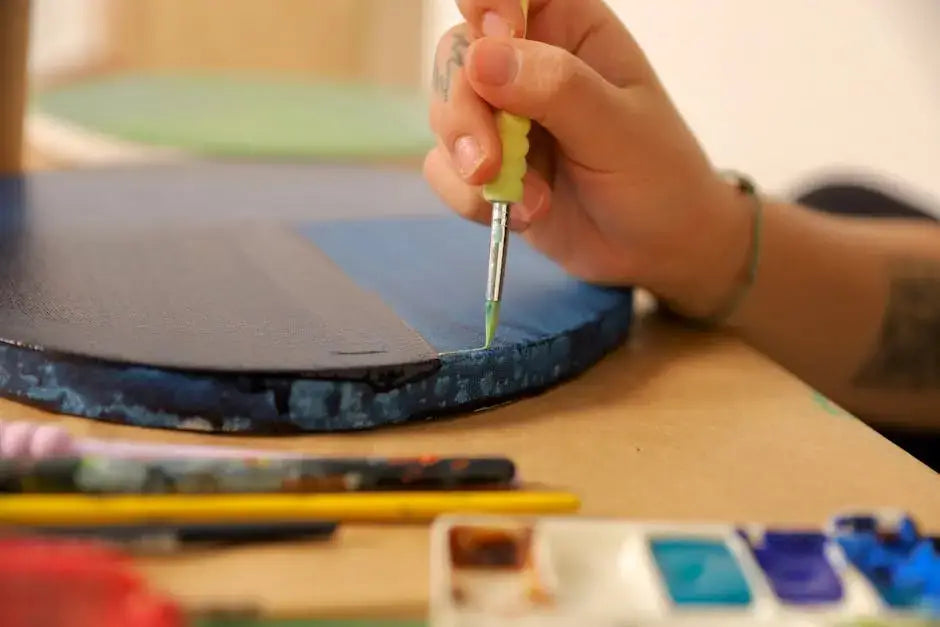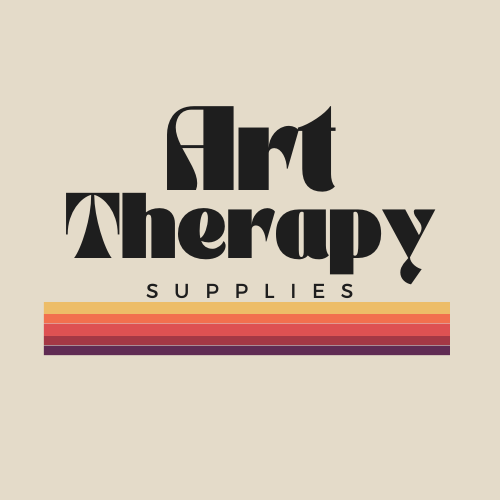Art therapy is a profoundly effective approach that allows individuals to express complex emotions and unlock their innate creativity. Whether you are a seasoned artist or just beginning to explore your artistic side, having access to the right art therapy tools can significantly enhance your experience. These tools serve not only as mediums for creation but also as catalysts for self-discovery, emotional healing, and personal growth. In this blog, we will explore some essential art therapy tools that can help you deepen your connection to your inner self, inspire innovative ideas, and foster a fulfilling artistic journey.

Understanding Art Therapy and Its Benefits
At its core, art therapy uniquely combines the expressive power of creativity with psychological support, providing a safe space for individuals to process emotions, reduce stress, and enhance overall mental health. Engaging in artistic activities enables people to explore feelings that may be difficult to articulate verbally, offering a non-verbal form of communication that can be deeply cathartic. This process allows individuals to confront and understand complex emotions, fostering greater self-awareness and emotional resilience.
The benefits of art therapy extend beyond emotional expression; it can facilitate mindfulness, promote relaxation, and improve mood. By focusing on the act of creation, participants often experience a sense of accomplishment and empowerment. Moreover, art therapy is inclusive and accessible to all age groups—from children expressing their early feelings through drawing to adults rediscovering their artistic passions as a form of healing. Its capacity to transcend language barriers makes it a powerful tool for fostering connection, understanding, and personal transformation.
Essential Art Therapy Tools for Every Artist
Having the appropriate art therapy tools can profoundly influence your creative process, making it more engaging and effective. From versatile sketchbooks to a range of mediums, each tool offers unique possibilities for self-expression. Selecting high-quality supplies tailored to your preferences can encourage experimentation, help you explore new techniques, and deepen your emotional connection with your art. These tools serve as extensions of your inner voice, enabling you to communicate feelings that words cannot capture.
A sturdy, inviting sketchbook acts as a personal journal for your thoughts, ideas, and emotional states. Opt for one with thick, textured pages capable of handling various mediums like graphite, charcoal, or watercolor. The tactile experience of turning each page can inspire new insights and serve as a visual diary of your emotional growth. A carefully chosen sketchbook becomes a trusted companion on your art therapy journey, offering a private space for raw and honest expression.
In addition to sketchbooks, a thoughtfully curated palette of paints—such as acrylics or watercolors—opens an expansive world of color exploration. Experimenting with different hues, tones, and color mixing techniques can evoke specific moods and deepen your understanding of color psychology. Quality brushes in various shapes and sizes, including round, flat, and detail brushes, enable you to create diverse textures and effects, enriching your artistic vocabulary. Investing in durable, comfortable tools can elevate your work and make your creative sessions more pleasurable.
Further, incorporating tactile art supplies like charcoal, pastels, and textured mediums can add depth and richness to your artwork. These materials provide sensory engagement, allowing for spontaneous and intuitive mark-making. The physicality of working with these tools can foster a sense of liberation and immediacy, helping you access deeper layers of emotion. Remember, the power of art therapy tools lies not only in their features but also in how you use them—each stroke and color choice reflecting your personal narrative, making every piece uniquely yours.
Techniques to Enhance Your Creative Flow
Embracing techniques such as free drawing, collage-making, and color exploration can significantly stimulate your creative flow and foster new perspectives. These methods encourage spontaneity, intuition, and experimentation, which are essential for unlocking hidden emotions and expanding your artistic horizons. Engaging regularly with these techniques can help break creative blocks, promote mindfulness, and deepen your emotional connection to your art.
Free drawing, or automatic drawing, invites you to let your hand move freely across the paper without judgment or expectation. This practice can reveal subconscious thoughts and feelings, serving as a mirror to your inner landscape. It’s a powerful way to bypass mental filters and access raw, authentic expression. The emphasis is on process rather than product, cultivating a sense of playfulness and curiosity that can lead to surprising insights.
Collage-making offers a tactile and visual approach to storytelling. By assembling images, textures, and colors from magazines, fabric, or found objects, you create layered narratives that reflect your personal experiences and emotions. This process encourages intuitive decision-making and can serve as a form of visual journaling, capturing complex feelings in a tangible form. It also fosters problem-solving skills and creativity as you experiment with composition and material combinations.
Color exploration involves experimenting with different color combinations and layering techniques to evoke specific moods or atmospheres. Creating a color wheel through layering paints or mixing shades can deepen your understanding of color relationships and emotional effects. This practice enhances your ability to select and apply colors intentionally, enriching your artistic vocabulary and making your work more expressive. Regular color exploration can lead to discovering new stylistic preferences and expanding your artistic repertoire.
Creating a Safe Space for Artistic Expression
Designating a dedicated art space can profoundly impact your creative practice by fostering a sense of safety and inspiration. A well-organized, inviting environment encourages regular engagement and allows your mind to focus fully on your artistic process. Personalizing this space with inspiring items, such as artwork, motivational quotes, or meaningful objects, can energize your sessions and make your creative environment uniquely yours.
Choose a quiet corner with ample natural light and good ventilation, minimizing distractions and creating a calming atmosphere. Incorporate organizational tools like shelves, containers, or drawers to keep your supplies accessible yet tidy, reducing stress and enhancing focus. Comfortable seating, whether a supportive chair or a cushioned mat, ensures that you can sustain longer periods of creative work without physical discomfort. Your art space should be a sanctuary—a place where vulnerability and self-expression are welcomed and nurtured.
Establishing a ritual for entering your art corner—such as lighting a candle, playing calming music, or taking a few deep breaths—can signal your brain that it’s time to shift into a creative mindset. Consistent routines reinforce the habit of engaging with your art, making it easier to access your inner emotional landscape and foster ongoing growth. Over time, your dedicated space can become a powerful sanctuary for healing, insight, and joyful exploration.
Incorporating Mindfulness into Your Art Practice
Mindfulness can deepen your engagement with art therapy by fostering a present-centered awareness that enhances emotional clarity and creative expression. Simple practices like focused breathing and sensory awareness can transform your artistic sessions into meditative experiences, promoting relaxation and emotional insight. Mindfulness encourages you to observe your work without judgment, cultivating compassion and patience with yourself as you navigate your creative journey.
Begin each session with a few minutes of deep breathing—inhale slowly through your nose, hold for a moment, then exhale gently. Visualize your thoughts becoming lighter with each breath, creating space for new ideas and emotional truths to emerge. This grounding technique helps calm the mind and prepares you to engage authentically with your art.
During your creative process, pay close attention to the sensory details—the texture of your materials, the flow of your brushstrokes, or the rhythm of your movements. Focusing on these sensations enhances mindfulness and makes your work more emotionally resonant. Pausing periodically to observe and reflect on your artwork without critique fosters a non-judgmental attitude, allowing deeper insights to surface and encouraging ongoing self-awareness.
Finding Community and Support in Art Therapy
Joining a community of like-minded individuals can significantly enrich your art therapy journey. Participating in local workshops, support groups, or online forums creates opportunities for shared learning, encouragement, and accountability. Connecting with others who understand the healing power of art can inspire new ideas, provide emotional support, and foster a sense of belonging.
Local art classes or therapy groups offer a structured environment where you can learn new techniques, receive constructive feedback, and share your experiences. These settings often cultivate a supportive atmosphere that normalizes vulnerability and celebrates personal expression. Online communities—such as social media groups or dedicated forums—allow for ongoing connection, resource sharing, and showcasing your work in a safe, non-judgmental space. Engaging with these networks can boost motivation, reduce feelings of isolation, and inspire continued growth in your art therapy practice.
If possible, seek out a mentor or experienced artist within these communities. Their guidance can help you navigate challenges, explore new mediums, and deepen your understanding of art therapy’s emotional benefits. Building relationships within supportive networks amplifies the healing and transformative potential of your artistic exploration, making your journey more meaningful and sustainable.
Embrace Your Creative Journey
By integrating these essential art therapy tools and techniques into your routine, you open yourself to a richer, more expressive relationship with your inner self. Remember, the goal of art therapy is not perfection but authenticity, exploration, and enjoyment. Each stroke, color choice, and creative experiment is a step toward greater self-awareness and emotional well-being. Embrace the process with patience and curiosity, knowing that your artistic journey is a powerful pathway to healing, growth, and self-discovery. So, pick up your tools, create without judgment, and let your unique voice shine through your art every day.

